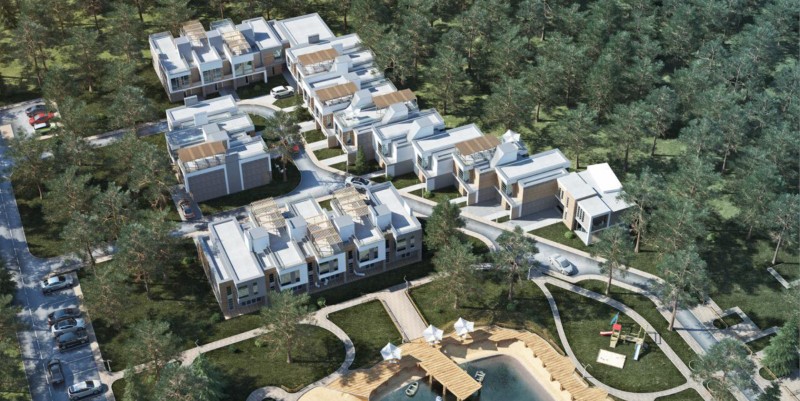
Houses for sale in a cottage town
Product of promotion:
Private houses in a cottage town (Lviv suburb)
This case study contains almost no numbers, but it provides a fairly detailed description of the approach to planning and implementing a real estate niche advertising campaign.
Project features:
The client’s task was to quickly launch advertising for the sale of houses (new buildings).
There were relatively few houses left for sale (20), so the request was roughly worded “we have a website, we need to sell quickly, let’s get started.”
An additional feature was the relatively small advertising budget for the entire project – up to $2000 and the desire to close all sales in 3-4 months.
Preparation before the launch of advertising consisted of creating a strategy for advertising campaigns and preparing a list of edits for the website.
The strategy included the following main sections:
- segments of the audience to be targeted;
- key features and benefits of the cottage town to be used in advertising offers and on the website.
In other words, we have to answer two main questions:
- what are we selling?
- who are we selling to?
The strategy also had to include preliminary advertising budgets for approval by the client. A detailed advertising plan was prepared later.
As soon as we decided on the key features and benefits of the cottage town, we started preparing the tasks for making changes to the website. Let me remind you that the timeframe for all preparations for the launch of advertising had to be minimal, so we did it in this sequence. Obviously, making changes to the website also required time to finalize the strategy and advertising plan.
The site was already adaptive (for smartphones), but there were some drawbacks with the display on mobile. It was also suggested to increase the number of buttons linking to the feedback form (CTA), as the landing page was the size of several screens.
More significant changes were made to the content. It is worth noting that all advertising campaigns had to lead to the website, as this was the only way to provide enough information about the location, buildings, and other things for the site visitor to make an informed decision to contact (simply put, it all had to improve the quality of leads).
The current version of the site contained very little of this information. And the available information was not very well structured.
For example, there was no information about developers at all, although this is important for potential real estate buyers.
Or the location was presented in the form of a screenshot of a map, which was also of poor quality.
After the edits were made, some of the content was presented in the form of concise “dry” facts, and some was presented in the form of a short story.
People like to perceive information in different ways, so we tried to make the landing page content as universal as possible.
We also set up all the necessary analytics.
Next, we returned to segmenting the target audience.
It was obvious that the audience had to be wealthy, but there were several hypotheses about the settings for Facebook/Instagram:
- positions (top executives, business owners
- niches of business and business activity (by interests and behavior)
- hobbies, leisure activities (by interests and behavior)
- target interests (real estate).
Google ads were run on search and in the Display Network (PPC).
The following messages were chosen for the offers:
- an option for permanent housing in an environmentally friendly area
- summer residence
- additional rental income (an additional service provided by the developer)
- investing in promising real estate
The locations were set up in the following cities:
Kyiv, Lviv, Dnipro, Kryvyi Rih, Kharkiv, Odesa.
Offers for Lviv were different from other cities.
Project results:
Advertising was active for less than three months. During this period, all 20 houses were sold.
The total budget for Facebook/Instagram was $980, and for Google – $850.
The average cost per sale (CPS) was $91.